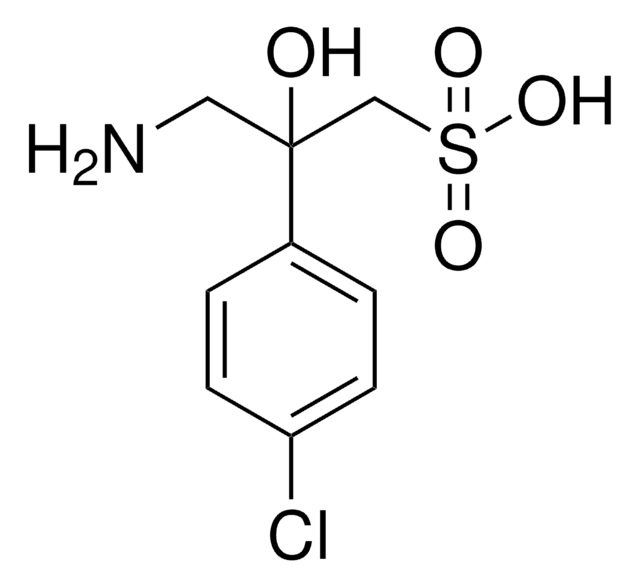S166
Saclofen
solid
Sinónimos:
β-(Aminomethyl)-4-chlorobenzeneethanesulfonic acid
About This Item
Productos recomendados
Formulario
solid
color
white
solubilidad
0.1 M NaOH: 20 mg/mL
cadena SMILES
NCC(CS(O)(=O)=O)c1ccc(Cl)cc1
InChI
1S/C9H12ClNO3S/c10-9-3-1-7(2-4-9)8(5-11)6-15(12,13)14/h1-4,8H,5-6,11H2,(H,12,13,14)
Clave InChI
JYLNVJYYQQXNEK-UHFFFAOYSA-N
Información sobre el gen
human ... GABBR1(2550) , GABBR2(9568)
mouse ... GABBR1(54393) , GABBR2(242425)
rat ... GABBR1(81657) , GABBR2(83633)
Aplicación
Acciones bioquímicas o fisiológicas
Código de clase de almacenamiento
11 - Combustible Solids
Clase de riesgo para el agua (WGK)
WGK 3
Punto de inflamabilidad (°F)
Not applicable
Punto de inflamabilidad (°C)
Not applicable
Equipo de protección personal
Eyeshields, Gloves, type N95 (US)
Elija entre una de las versiones más recientes:
¿Ya tiene este producto?
Encuentre la documentación para los productos que ha comprado recientemente en la Biblioteca de documentos.
Nuestro equipo de científicos tiene experiencia en todas las áreas de investigación: Ciencias de la vida, Ciencia de los materiales, Síntesis química, Cromatografía, Analítica y muchas otras.
Póngase en contacto con el Servicio técnico







